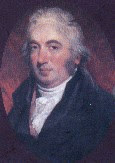Jack Fuller bequeathed Perch Hill Farm to his gamekeeper Abraham Baxter:
"I give and direct unto Abraham Baxter of Brightling aforesaid my gamekeeper all that messuage or tenement farm lands and premises situate in the Parish of Brightling aforesaid called or known by the name of Perch Hill Farm which I lately purchased of George Hoad"
lines 70-72, Fuller's will
Adam Nicolson, Grandson of Harold Nicolson and Vita Sacville-West,his wife Sarah Raven and their children currently live at Perch Hill Farm. Nicolson wrote " Perch HIll Farm, A New Life", (Penguin,October 26, 2000, ISBN: 0140290893) about their adjustment to life in rural Sussex:
"Adam Nicolson's homage to a new life is set to become a modern classic of rural England. Funny, poetic, ironic and wise, this is a profoundly moving and beautifully crafted book about his search for the rural idyll.
A particularly savage mugging in London was the catalyst for his move in search of a rural Arcadia. And so, without knowing one end of a hay baler from the other, Adam Nicolson escaped with his family to a run-down farm in the Sussex Weald. What he found was a mixture of intense beauty and profound chaos. Over the three years that the book describes, he struggled with dockleaves, spring flowers, bloody-minded sheep, his neighbours, his woods and his fields, before eventually arriving at some kind of equilibrium.
Perch Hill traces the growing intimacy between a man and his chosen place, his love affair with it and his frustrations with its intractable realities. As an attempt to live out the pastoral vision, it makes one heartfelt pleas: we should never abandon our dreams."
Read full article
here.
2005 marks the 200th anniversary of Nelson's victory at Trafalgar. The bell ringers at Brightling Church are participating in a national bell pull on Sunday October 29th to commemorate the event. Adam Nicolson's book "Seize the Fire : Heroism, Duty, and the Battle of Trafalgar" Harper Collins,September 1, 2005, ISBN: 0060753617) examines the cult of heroism from a new angle.
"Seize the Fire not only vividly describes the brutal realities of battle but enters the hearts and minds of the men who were there; it is a portrait of a moment, a close and passionately engaged depiction of a frame of mind at a turning point in world history."
For more detail click
here.Nicolson's wife,
Sarah Raven has presented special features on the BBC's Gardeners' World about growing cut flowers and vegetables.
"Columnist and writer Sarah Raven runs gardening courses at her home Perch Hill Farm in Sussex, and manages a seed catalogue.
Sarah's well known for her love of growing flowers that can be cut and made into colourful indoor arrangements. As well as her home-run courses, she lectures all around Britain.
Sarah specialises in teaching people who've never picked up a spade, let alone pricked out a zinnia! Her seed catalogue contains unusual vegetables, salads and herbs, as well as flowers grown specifically for cutting. She grows plants to supply her courses, and for weddings and parties.
A columnist for a national newspaper, Sarah also writes for Sainsbury's Magazine. Her first book, The Cutting Garden, won The Specialist Gardening Book of the Year. Her more recent book, The Bold and Brilliant Garden, was runner-up to Gardening Book of the Year."
From
www.bbc.co.uk












